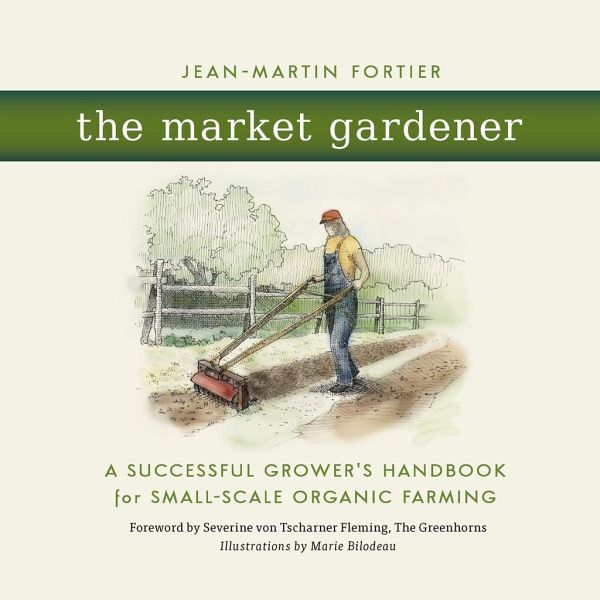
The Market Gardener
A Successful Grower's Handbook for Small-Scale Organic Farming

PAYBACK Punkte
15 °P sammeln!
Transform 1.5 acres into a 6 figure annual income through proven small-scale organic farming methods. Jean-Martin Fortier demonstrates how he and his wife built a thriving market garden operation feeding 200+ families while maintaining work-life balance using low-tech, high-yield techniques that work in any climate. Why This System Works Where Others Fail: Unlike industrial farming that requires massive acreage and equipment, this micro-farming approach maximizes profits per square foot through intensive, sustainable methods. Based on 10+ years of real-world success, these techniques have been...
Transform 1.5 acres into a 6 figure annual income through proven small-scale organic farming methods. Jean-Martin Fortier demonstrates how he and his wife built a thriving market garden operation feeding 200+ families while maintaining work-life balance using low-tech, high-yield techniques that work in any climate. Why This System Works Where Others Fail: Unlike industrial farming that requires massive acreage and equipment, this micro-farming approach maximizes profits per square foot through intensive, sustainable methods. Based on 10+ years of real-world success, these techniques have been replicated by thousands of growers worldwide. What You'll Master: * Profitable crop selection - which vegetables generate $15-20 per square foot annually * Efficient farm layout - design systems that minimize work while maximizing yields * Tool and equipment choices - cost-effective alternatives to expensive machinery * Four-season production - extend harvests for year-round income streams * Direct marketing strategies - command premium prices through CSA and farmers markets * Financial planning templates - track profits, plan cash flow, and scale systematically Proven Results from Real Farmers: Over 200,000 copies sold worldwide have helped farmers like you transition from hobby gardening to profitable small-scale agriculture. Jean-Martin's students report achieving financial independence on 2-5 acres using these exact methods. Start building your profitable market garden operation today. This isn't theory - it's a complete playbook from someone who's actually making a living from small-scale farming.



